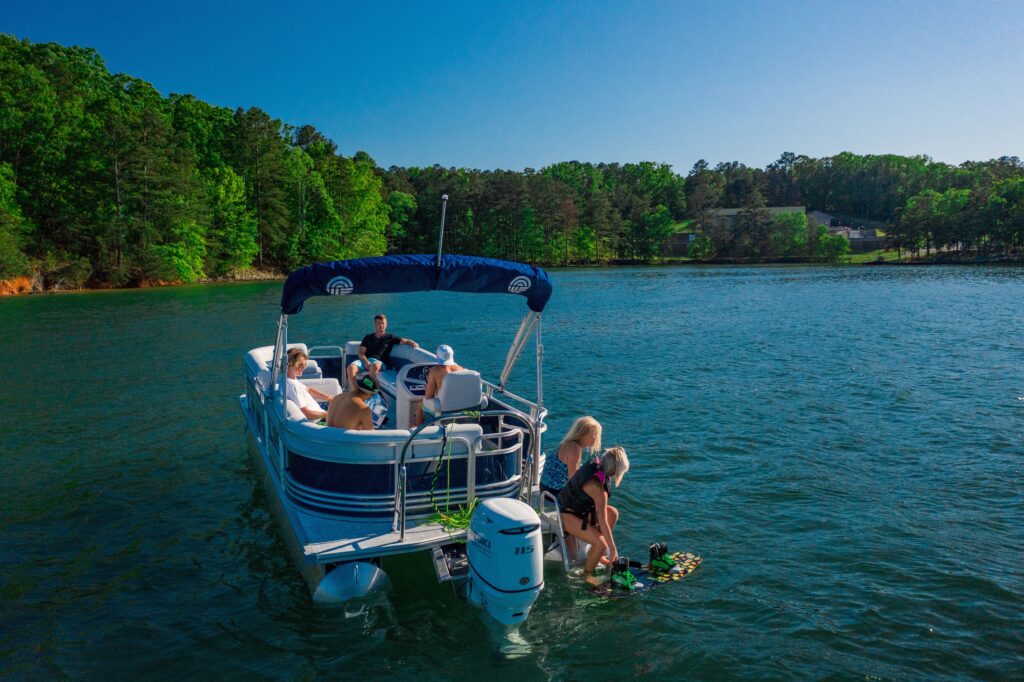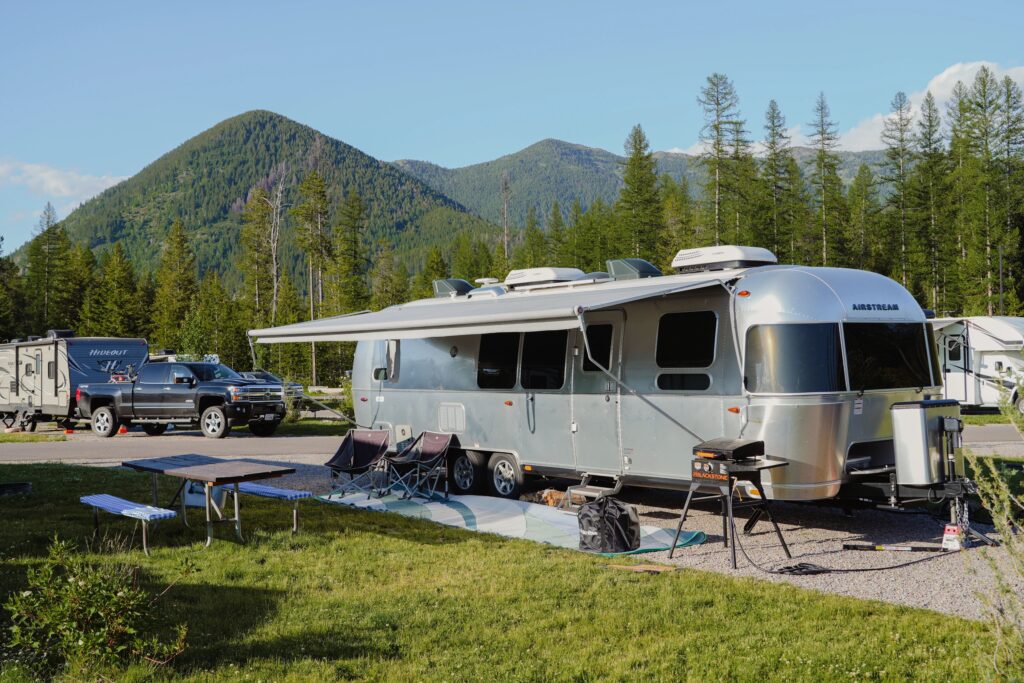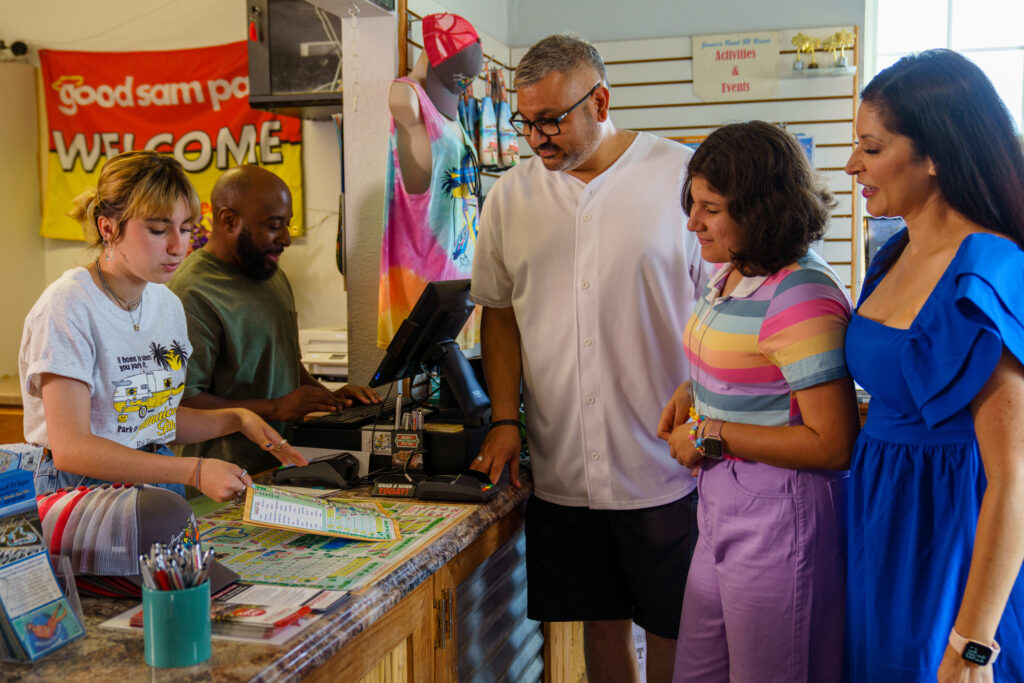Your campground’s demographic is the primary interest group or groups you target.
For example, many RV parks in Texas, Arizona, and Florida are 55+ campgrounds—meaning they only admit senior citizens and tailor their communications and offerings accordingly.
While this might sound counterintuitive, potentially restricting your audience, these campgrounds benefit from highly focused marketing and amenities that attract one specific campground demographic.
By knowing and targeting your campground’s demographic, you’ll benefit from more efficient marketing spending, proper prioritization of infrastructure projects, and increased profitability.
Let’s dig in to understand how to get to know your campground’s demographic, ways to market to that demographic, and methods to adapt to demographic changes.
Know Your Campground’s Demographic
Many campgrounds don’t know their demographic. But by asking a few straightforward questions, you can get to the bottom of your primary target audience.
WHAT DEMOGRAPHIC IS COMING TO YOUR AREA?
You’d be surprised at the number of RV parks that don’t have a ready answer to this question. Don’t let that be you! By taking stock of your surroundings—towns, national parks, attractions, economy—you can quickly figure out who’s traveling there and why.
Are you near a national park? You’ll likely have a demographic of very outdoorsy and adventurous folks of all ages, eager to explore.
Near wine country and vineyards? Your demographic likely includes a more affluent base who might enjoy a more refined camping experience.
Near the beach? Everyone loves the beach, so you’ll have a wider demographic range you can choose to focus on. But the majority will be eager to spend time at the beach, not at the campsite.
In the sticks? No problem. Take time to figure out who is traveling to your area and why. You can build your park’s image around that audience: hunters, anglers, those looking for more affordable camping or more prone to the outdoors.
Near a city? Millennials and remote workers love cities (generally speaking) so, if you’re near an urban oasis, they are a demographic to consider targeting.

WHICH DEMOGRAPHIC DO YOU WANT TO SERVE?
Even if you live in an area frequented by senior citizens, that doesn’t necessarily mean you need to focus on serving that audience. Florida, Arizona, and Alabama, for example, are major hubs for remote workers and younger nomads.
If you have a park in these states and would rather serve a remote working demographic, why not?
The point is that your campground’s demographic is a combination of who you want it to be and who is coming to your area. Take the time to understand who is coming and decide which group you’ll focus on and how.
WHAT’S THE AVERAGE INCOME FOR YOUR DEMOGRAPHIC?
Another important factor to consider is the level of income for the demographic you wish to serve. If it tends to be higher, offering amenities like luxury clubhouses, spas, tennis courts, and more might make sense.
If you cater to nomadic professionals, investing in excellent WiFi, coworking community spaces, and glamping options are usually the way to go.
Or, you may want to cater to a budget-minded demographic who simply wants clean, safe, and reliable amenities.
Either way is fine—but understanding the average income of your customer on the front end will help focus your efforts.
Marketing To Your Demographic
Having a deep understanding of your demographic will greatly help when it comes to the marketing you do for your campground. Here are some tips for creating engaging marketing that speaks to the people you want it to speak to.

LEARN THE LANGUAGE
Listen to your prospective customers to learn about the problems they have (e.g. challenges they’ve experienced at other campgrounds) and what they desire in an RV park.
The best way to do this is to constantly gather feedback about what your guests do and don’t like about your park experience. Ask them when they check-in. Ask them when they check out. Follow up with them via a short email or text after their stay.
The replies to these questions will be gold for you as you craft your campground’s messaging.
USE THE LANGUAGE
Once you know how your demographic speaks, you can use that language throughout your website, in your social media communications, and around the park.
For example, if you have a large number of remote workers coming to your park who love your coworking-friendly clubhouse and speedy WiFi, you could post an Instagram pic of folks working with a caption that reads something like:
‘No matter where you park it, you can be connected. Come check out our fan-favorite clubhouse at our RV park.’
You can also use the language of your customers in physical locations throughout your park to show guests that you get them and have what they need. An aptly worded mission statement in the clubhouse or a snippet of your story in a welcome packet goes a long way in connecting you with your campground’s demographic.
FIGURE OUT WHERE YOUR TRIBE IS
How is your target customer currently finding campgrounds? What RVing groups are they part of? How do they communicate about the places they love along their journey?
It’s important to know where your demographic is communicating and engaging online so you can get in front of them to show off your spot.
An overwhelming majority of people rely on Google reviews to make decisions about businesses they buy from. That’s why it’s vital for you to ensure your Google Business Profile is up to snuff. Devote time to crafting your Google business description and cultivating reviews to call out to your target demographic.
RVers are also very active on Facebook—meaning that having a basic Facebook page for your park with a regular posting plan is a helpful way to understand and market to your tribe.

GOOD SAM CAMPGROUND SOLUTIONS TIP
These traditional means of setting up social media accounts and online business pages like Google Business Profile are only the tip of the iceberg when reaching your audience online. Good Sam Campground Solutions Marketing & Advertising tools help you expand your reach.
These tools put your campground in front of audiences based on their interest. So if your campground is located near a lake, you could reach audiences searching in the “Boating Fun” section, so more audiences with a boat might see your campground first.
In addition, Good Sam Marketing & Advertising allows you to choose placements, paid media, social media, and ads a la carte, so you specify the type and extent of reach you want to pay for.
Adapting Your Campground To Demographic Changes
The only constant in life is change. Your audience might want one thing one day and another the next. Or that’s how it feels. Here are some ways to maintain the right amount of flexibility to respond to those changes.
KNOW THE CHANGE
Now that you know your campground’s demographic, it’s important to keep up to date with trends that impact them.
One of the best ways to do this is via Google News Alerts. This system allows you to tell Google about the trends and topics you want to hear about—wherever and whenever they appear on the web.
If you cater to full-time RVers, for example, you could tell Google you want it to ping you when it sees news articles related to phrases like: “full-time RVing,” “family RVing full-time,” “full-time RVer groups,” and more.
Google will then email you links (on a schedule of your choosing) to the most relevant articles for your search terms. By taking a few minutes each week to read these articles, you’ll have a deeper understanding of your tribe and the changes that might be coming.
EMBRACE THE CHANGE
If your campground caters to a younger crowd, chances are good they’ll want to know that you’re continually upgrading your park’s technology.
Tech advances have made this easier than ever for you because you no longer have to build everything yourself when it comes to things like online campground reservation software and camp store management. Software and tech companies realize that they have to make it easy for you to keep up with technological changes, so they work hard to put things together in easy-to-use packages.
If your demographic is older, you’ll likely benefit from a customer base that changes more slowly. The things they want today will likely be very similar to the things they want tomorrow—meaning you can focus on doubling down on the amenities at your park you know they love.
No matter which crowd you serve, embrace change as an opportunity to find new and fun ways to engage more deeply with your guests.
CHANGE THE WAY YOU COMMUNICATE
Oftentimes a simple communications shift can help you respond to change. Perhaps your demographic is being hit hard by external forces like inflation, high-interest rates, or career uncertainty.
You could speak directly to these issues in your marketing to show people why your park offers an affordable and refreshing escape from these woes.
Get creative with ways you can adapt your messaging—rather than your foundations—to respond to change.
OR, MAYBE DON’T CHANGE…
Just because the demographics change doesn’t always mean you have to. Some of the best businesses on the planet are ones that sell their refusal to change.
For example, places like old-school diners, vintage trailer campgrounds, and drive-in movie theaters sell their unchanged ways.
It can be risky, but if you have the right kind of RV park, holding your ground is sometimes the way to go.
The demographic you serve at your park informs an array of decisions—from marketing to infrastructure to the booking platform you use. Oftentimes, you’ll serve a number of demographics, but there’s usually one or two that’ll make up the majority. Stick with the steps above to get to know them and to speak to them in ways that lead to awesome customer relationships.